Digital Art History
The 1930's: Electronics, abstraction, mass media
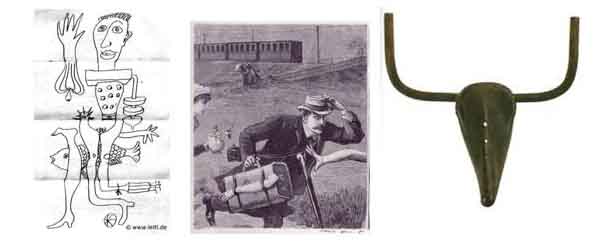
Cadavres exquis (surrealists), collages (Ernst), mountings (Picasso). The digital surge is announced by the dialectics of fragmentation/assembly. .
See:
- The digital context.
-
Index of "digital" artists of this period.
- A Critical Examination of Computer Art by Nick Lambert (Philosophy thesis, University of Oxford, 2003).
Several thinkers foresee the importance of technologies and of what we call today "new medias".
-
Earl of Birkenhead (a consultant for Winston Churchill) draws an impressive view of The World in 2030 A.D. (Hodder and Stoughton, 1930), with visionary illustrations.
-
Maurice Simart. The indefinite possibilities of reproduction by chemical copy and radio (then television at the end of the decade) broadcast let dream an author like Maurice Simart about their social consequences. His formulations lend smile today, nearly a century later, though far from realistic in some way. (Read here a long extract, in French) .
- Paul Otlet has a real vision of new media, he makes an encyclopedia on microfilm and publishesTraité de documentation (1934).
-
Walter Benjamin is pessimistic in his The Work of Art in the Age of Mechanical Reproduction (1936).
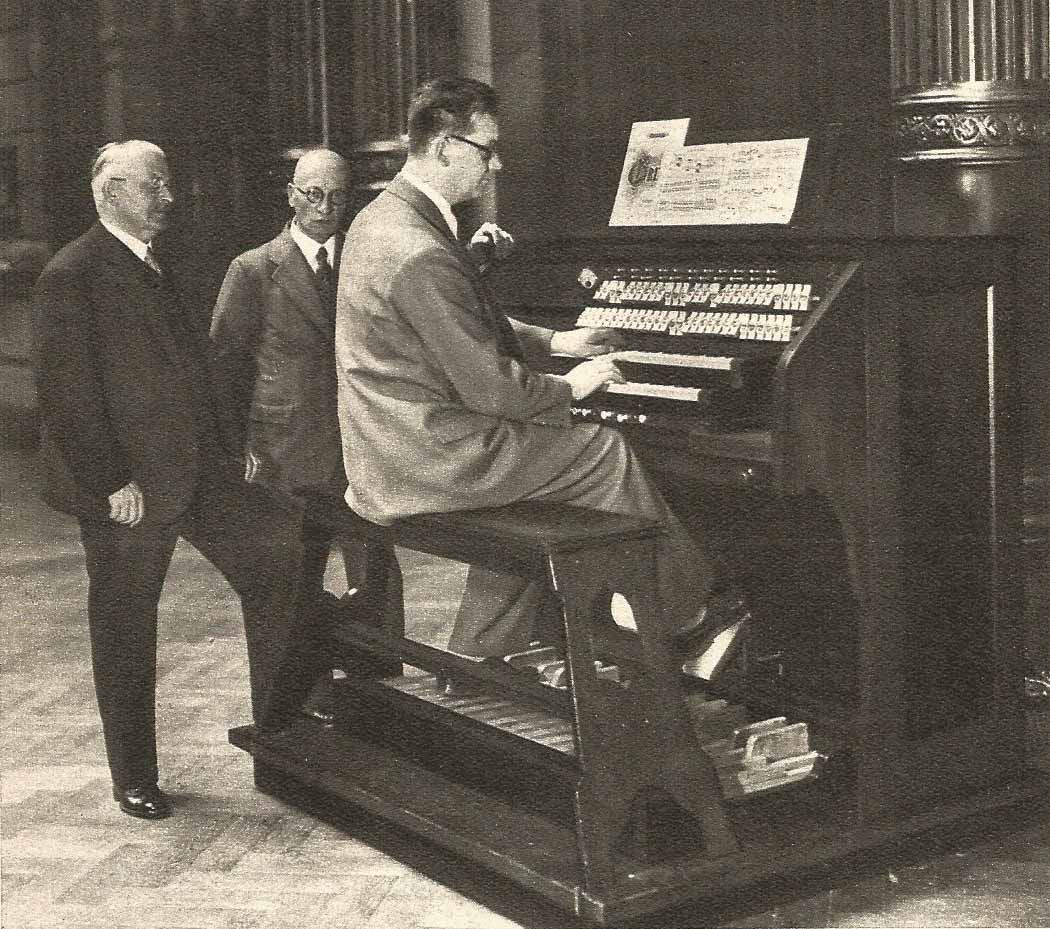
The Welte organ
Literature
Surrealists, around their leader André Breton think a lot. Certain not the digital way, but there are similarities: automatic writing (not by machine). Near them, the Oulipo group develops a set of protocols for combinatorial text generation (mostly, but there are attemps in drawing, painting, theater).
Surrealists explore also th theme of automatic writing by human beings. It has nothing to do with digital technologies, but testifies of the pregnancy of man-machine considerations.
Music : radio and synthesizers
Music is the first art to benefit out of electronics, and exploits it all along its production and distribution chain.
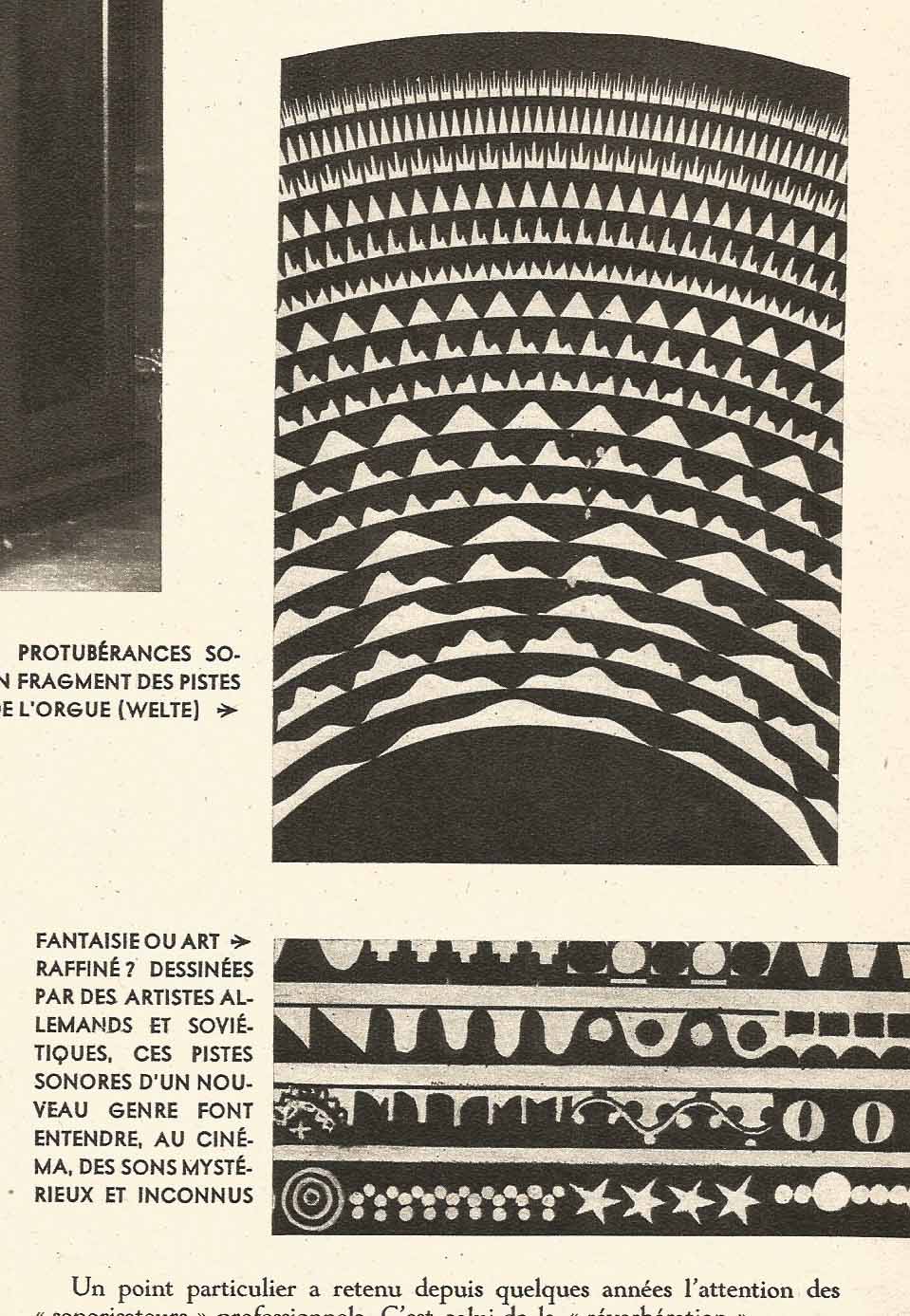
The Welte organ. Sound tracks
It's a great time for synthesizers. Several composers use Martenot waves, like Arthur Honegger and Darius Milhaud. But appear also the Hammond organ (Wikipedia) and the Welte organ (Speyer technik museum). using photocells to generate timbers from circular sound tracks. "The richness of Welte organ's timbers is, they say, splendid, and its speed is the same in low and high pitches, which is not the case with classic pipe organs. We attend to a really useful application of this "sound painting", of which Pfenning in Austria, Avrammof, Voinof, Ivandowsky in Russia, have drawn so curious combinations for sound cinema".
More important on the conceptual side, Joseph Schillinger develops algorithmic composition. He pushes very far the theory in his book Mathematical basis of the arts (published posthumously in 1948). He deals explicitly of automatic compositing, and applies it not only to music but also to graphics, forging the word "graphomaton".
Painting and around
Painting is central in the arts of this time and their pre-digital orientation.
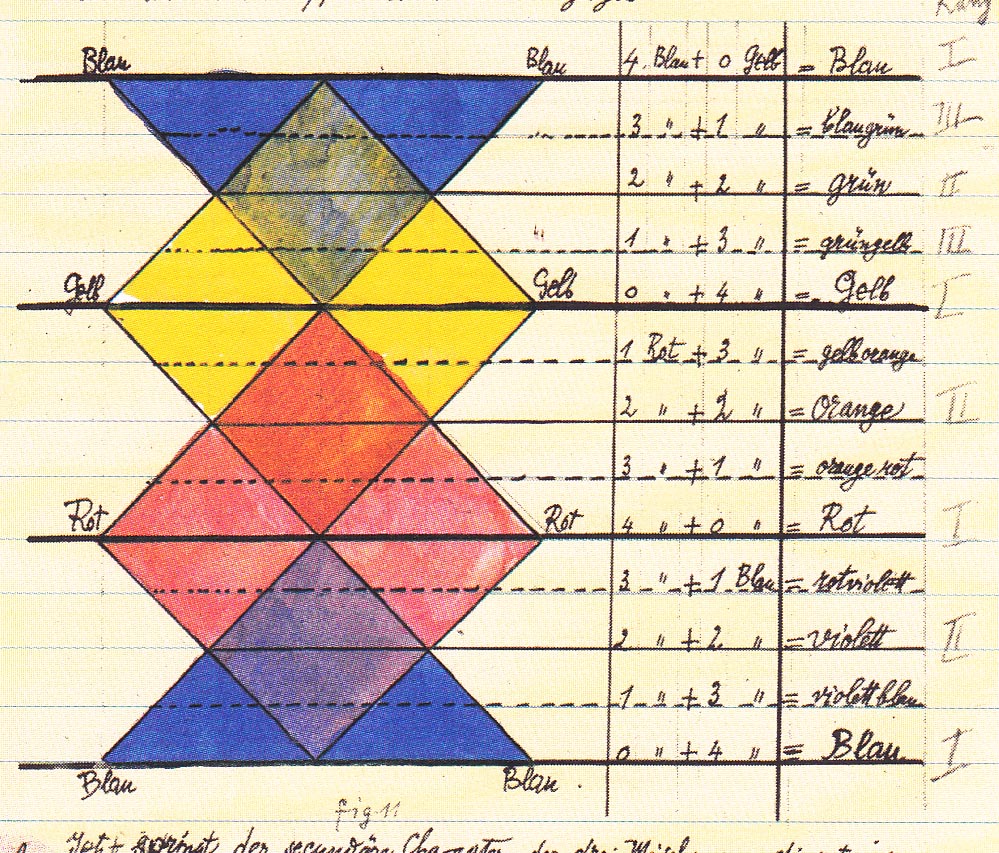
The Bauhaus, and specially Paul Klee, bring in sctructural methods, sets of elementary forms and combination processes that foretell graphic programming.
The Bauhaus tops the period, with Joseph Albers (colors and squares), Jonannes Itten,
Wassily Kandinsky and
Paul Klee. They are resolutely, if not outrageously "modern", with their square angles and research of abstraction. But they experiment a lot. The Bauhaus works in all the plastic disciplines. Le Corbusier, a cubist painter but mainly an architect, is rather near in spirit.
Piet Mondrian lets a similar impression.
Modern, but more by the subjects presented than in the technique (classical oil painting), the Futurists (Marinetti, Umberto Boccioni,
Bruno Munari) limit themselves to painting.
The Surreamosts practice the cutting of Cadadre Exquis. Several artists call explicitly to mathematics, like George Van-Tongerloo and Joseph Schillinger a musicin composer, but with strong algorithmic ideas (the graphomaton).
In 1934, H.H. Hiigbie publishes Lighting Calculations, says [Masson].
Light art is practiced by Ludwig Hirschfeld-Mack. The sculptures of Lazlo Moholy-Nagy evoke the future works of Nicolas Schoeffer.
Cinema
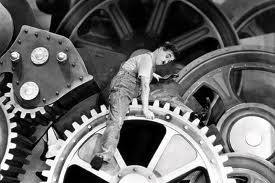
Modern Times (1936) is fully engaged in machinism critic. It is also the last silent film by Chaplin.
First talking movie by L. Gaumont (Chronophone), synchronizing a disk with the film. The standar process, where the pellicule integrates a soud track, is initiateb ty Movietone (Bell Laboratories, 1929).
Henry Valensi is called "a cinepainter" by [Popper 2007] In the early 1920's, a first inclusion of cinema (short) in a theater story, A wise man, by Eisenstein (see [Seton] p. 93).
Cinema gets sound with the talking movies, which (as many innovations, it is more surprising in a the rapidly evolving world of the 1930's) is not welcome by the cinema community. Even a deeply creative mind as Eisenstein sees it as "a transitory and false form" (according to [Seton] ).
In 1934, Disney takes the risk or realizing the first feature sound and color anmation film.
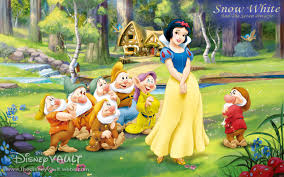
1934: Disney, Snowwhite.
< Blanche Neige et les Sept nains. La création du chef-d'oeuvre de Walt Disney. by Karl Derisson. L'Harmatta, Paris, 2014. I
Architecture
Architecture is the most resolutely "modern". Le Corbusier in France, the Bauhaus in Germany combine a functionalist ideology with rigid and right angles, sometimes even at the cost of structural robustness. Retrospectively, we are surprised to see how this way of thinking combines austerity and cold ness with a rather fuzzy spiritualism. Authors like Shuré and Bergson are among the causes.
Television. State French TV presented on march 31, 1939. Speech by Marcel Prévost, member of Académie française. - Two prospective films (1947), on line on 'INA website.
Performance
- In the early 1920's, 1920, Eisenstein includes a short film in a theater play [Seton] p. 93
- In the Bauhaus, Schlemmer Oskar leads a group about performance and dance.
DICCAN'S PARTNERS

Paris ACM Siggraph, the French chapter of ACM Siggraph, worldwide non-profit organization of computer graphics.
